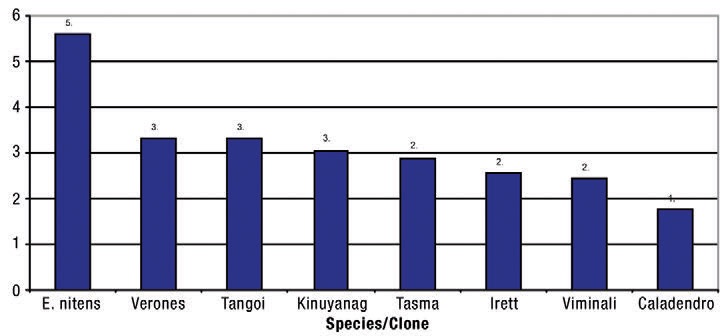Bioenergy demonstration planting, Bay of Plenty
Ian Nicholas and Kevin Snowdon, New Zealand Tree Grower May 2011.
As part of a Sustainable Farming Fund project evaluating willow as a feedstock for ethanol production in the Taupo area, a demonstration planting was established in 2006 on Whakapoungakau Lands Trust land. This is approximately one kilometre north east of Rotorua airport.
Rotorua provides good conditions for growing short rotation willows, with adequate summer rainfall averaging more than 100 mm a month, effective soils and suitable contour. Short rotation crops presents Rotorua land owners with land use that will have minimal effect on lakes from leaching of nutrients when compared with pastoral and dairy farming.
The trial
The planted block has 31 plots, this includes the two main shrub willow species being evaluated, Salix viminalis Gigantea, S. schwerinii ‘Kinuyanagi’, two other shrub willows S. caladendron, S. purpurea, a tree willow S. matsadana x alba Tangoio, two poplar clones Populus deltoides x P. nigra Tasman and P. deltoides x P. nigra Veronese, and one eucalypt species Eucalyptus nitens.
There are four replications of each species and clone except for S. viminalis which has only three replications. Trees were measured in 2007, 2008 and 2009. The three shrub willow plots were coppiced in 2008.The block was clear felled in spring 2009.
Using the coppicing ability of willows, the trial has been maintained since harvest in 2009.
Results

It is clear that E. nitens grows faster than willows and poplars. However, coppice regrowth at the site by E. nitens has been poor, with approximately 10 per cent of stools regrowing after being coppiced. Shrubby willows have less height growth than poplars. Yet the growth habit of shrubby willows provides a distinct advantage in terms of harvest cost and potential commercial returns to the grower of biomass. Willows are proving to be disease free and generally healthier than poplars trialled.
Ian Nicholas runs Ian Nicholas Consulting and Kevin Snowdon works for Vertichem Technology Limited

 Farm Forestry New Zealand
Farm Forestry New Zealand